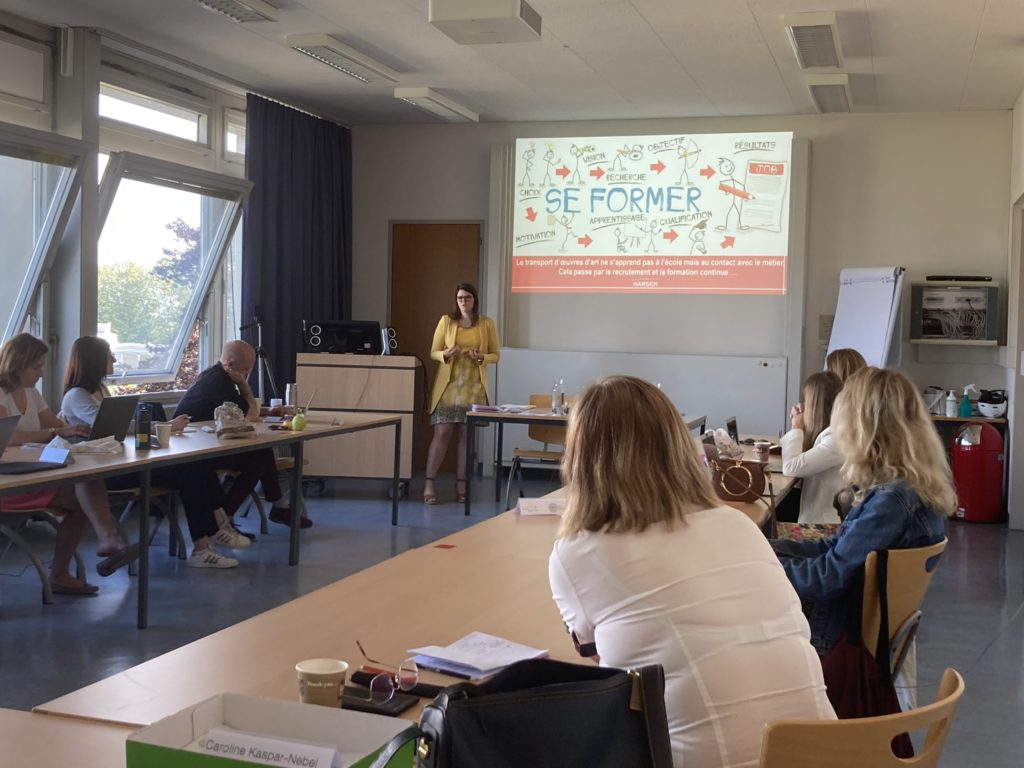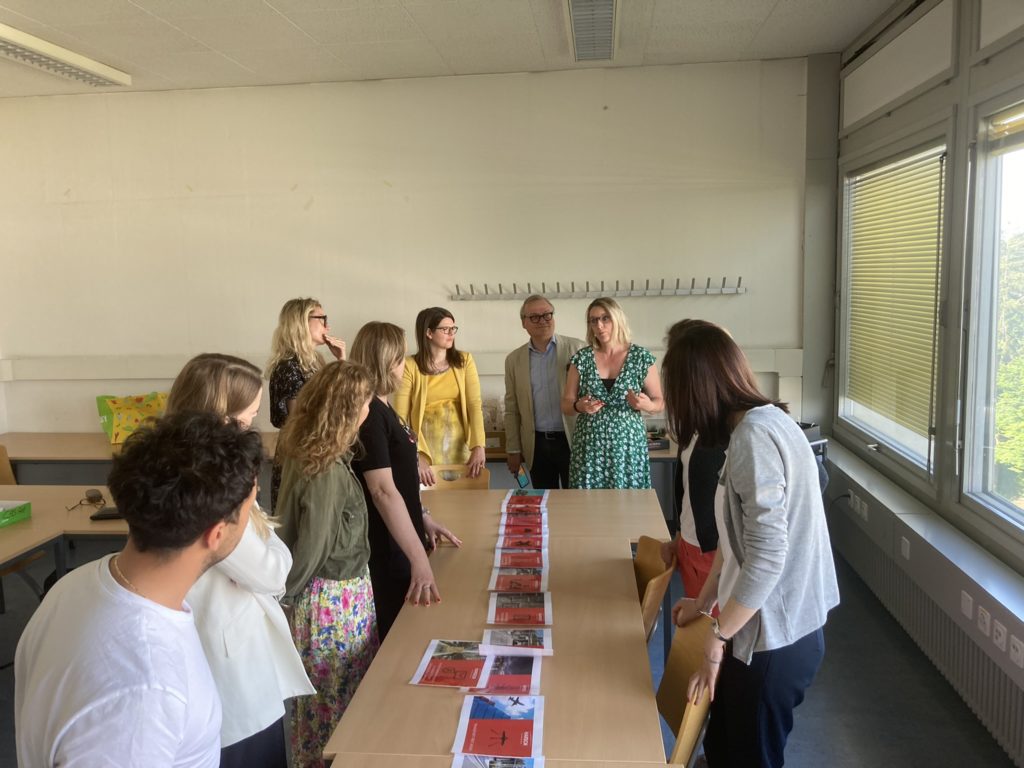CAS in Art Collection Management
Interview with Patrizia Roncadi, co-director of the Certificate of Advanced Studies (CAS) in Art Collection Management
With a thorough academic background in history of art and a Master in museology, Patrizia Roncadi started her professional journey as curator-restorer for the Italian Ministry of Culture. Throughout her career, she was able to immerse herself in different aspects of the artistic world, from the art market to the preservation of collections, together with publishing specialized publications. Her contribution as scientific collaborator for the Martin Bodmer foundation shows her devotion to the curating and the diffusion of art. In this role, she was the linchpin of several important exhibitions. In 2020, she moved a step further by co-directing the CAS in Art Collection Management, strengthening her position as a leading figure in the management and conservation of works of art. For a few days every year, the company Harsch share their expertise in the transport of works of art with CAS participants. An opportunity to meet and interview Patrizia Roncadi, co-director of the CAS in Art Collection Management.
Could you present in a few words the CAS in Art Collection Management and the role it plays in today’s artistic landscape?
Patrizia Roncadi It is essential to mention that we were able to create this project thanks to the unwavering support of the Geneva Haute École de Gestion that believed in its timely relevance. The world of art became a new field of training for the Haute École de Gestion that has had the audacity to offer this new CAS in Art Collection Management. We are currently preparing our third year of training.
This is a unique training due to the various activities within its perimeter, with its roots firmly set in the French part of Switzerland and the combination of different professional contexts. Its vision, concrete and complete, is based on the development of specific capacities supported by a strong field expertise. The many contributors we invited were all very enthusiastic which enabled us to set up the programme quickly and with a common stance. Actually, the contributors are the strongest assets of the project.
When you conceived the programme, in what way were you influenced by your experience as a restorer-curator and a scientific collaborator ?
PR To design the curriculum of courses and visits, we span a net of different competences that are all complementary. The very complex panorama of the art collection system, together with conservation and valuation, is governed by some good practices that we are going to analyse in order for the participants to acquire a broad and thorough knowledge.
What are the main modules or topics that are included in the programme ?
PR The training is agile and modular in order to allow each participant to choose the approach most useful to his or her personal development. This is the reason why the four modules deal with four very specific subjects: Knowledge of the art market, Management of a collection, Valuation of an art collection, The future of art is digital. Each module can be studied separately.
We created these four modules in the aim of developing the participants’ awareness of complex and specific occupations, for instance, the work of a gallery owner, of a curator or an investor. The capitalization of the expertise of our contributors leads to a better awareness of complementary and mutually related management strategies: to collect, keep, enhance, buy and sell, manage with the aim of exhibiting, exhibit with the aim of enhancing.
 Isabelle Harsch, CEO of Harsch with CAS participants
Isabelle Harsch, CEO of Harsch with CAS participants
How do you balance theory and practice ?
PR We focus especially on practice! Eminent specialists come to present actual cases and new solutions, methods that have been approved and that are applied according to the different typologies of the collections. Our aim is to bring together, around the management of collections, examples of strategies that are both reliable and approved. The contributors’ expertise is the real asset of the programme which is both complex and fluid.
Who is this training for and what are the prerequisites to join it ?
PR The programme is designed for graduates who have an Arts degree, a degree in History of Art, Law or Economics and to all the people who wish to complete an academic or professional cursus in the Art Industry system. A bachelor’s degree is the prerequisite. This training has been designed for people in employment, with courses taking place at the end of the week to allow those who are already working in a museum, a gallery or a Family Office to acquire a global knowledge of the world of art and its actors. The idea is to offer a multiplicity of imbrications between different domains of expertise to reveal the personal interests of each participant.
Does the programme collaborate with some institutions or professionals in the domain? If so, how do these collaborations enrich the participants’ experience ?
PR It is essential to collaborate with excellent contributors through lectures, visits to private restorers and workshops for digitization or chemical analysis, to exhibitions with a meeting with the curators, to galleries and their owners. The whole programme relies on dialogue and the sharing of knowledge. Our goal is not to propose final remedies, but rather to open some windows on the different professions that are all focusing on the same unique question: How to understand the substance and the value of a collection of art, and how to manage it?
 Magali Gaugy & Franco Momente from de Harsch Fine art dept. & Isabelle Harsch, CEO of Harsch with CAS participants.
Magali Gaugy & Franco Momente from de Harsch Fine art dept. & Isabelle Harsch, CEO of Harsch with CAS participants.
How do you see the evolution of the management of art collections in the years to come ?
PR The debate around digitization and artificial intelligence also resonates in the world of art which is, by definition, constantly changing. The question turns around the management and analysis tools that are getting faster and more effective. The multitude of data and metadata is increasing fast, and we must also include the relevance between technology and creativity.
We all know the importance that digitization has with regards to the management of collections in libraries and archives, but also in museology and in the art trade world. The research institutes are developing new platforms, such as digital humanities, online catalogues, new methods for the diagnostic of works of art, and lastly, augmented reality. The real digital strategy has an effect on personal chains that are turned towards the future and optimization, and we are confident in our ability to adapt and reinvent ourselves in the light of new perspectives. New discursive logics are revealed, as if man was constantly striving for clarity.
Like Guy Davenport said: “Art is always the replacing of indifference with attention”.